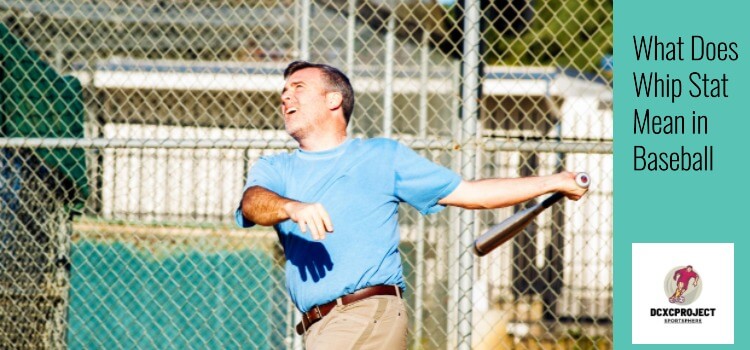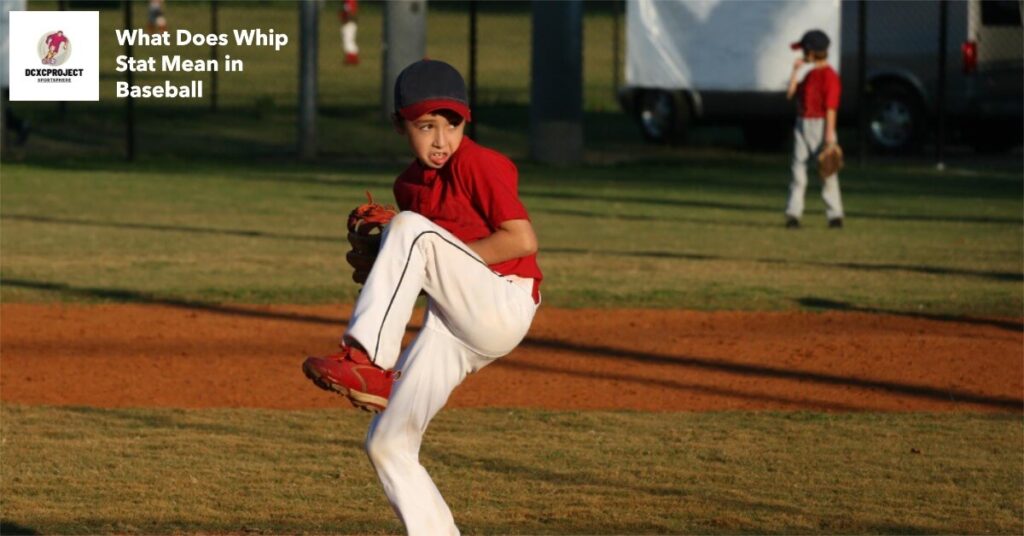What Does Whip Stat Mean in Baseball? is a question I often explore as a passionate baseball enthusiast. My specialty lies in analyzing statistics, especially the Whip Stat. This metric evaluates a pitcher’s effectiveness by calculating the number of walks and hits per inning pitched.
With a lower whip stat, the pitcher is considered more efficient in limiting the number of baserunners. WHIP stat helps teams evaluate a pitcher’s overall performance and is an important factor in determining a pitcher’s impact on the game. When considering a pitcher’s performance in baseball, the whip stat plays a crucial role, providing valuable insights into their effectiveness on the mound.
It is essential for both teams and fans to understand this statistic as it directly impacts the outcome of the game. With its emphasis on limiting baserunners, the whip stat is a significant metric in evaluating a pitcher’s contribution to their team’s success.
Understanding Whip Stat In Baseball
Understanding the WHIP (Walks Plus Hits Per Inning Pitched) stat is crucial when analyzing a pitcher’s performance in baseball. WHIP provides a clear insight into a pitcher’s ability to prevent opposing batters from reaching base, as it calculates the average number of walks and hits surrendered per inning. Let’s delve deeper into the significance of WHIP in evaluating a pitcher’s effectiveness.
Definition Of Whip-In Baseball
The WHIP, also known as Walks Plus Hits Per Inning Pitched, is a fundamental statistic used to measure a pitcher’s efficacy in limiting baserunners. It is computed by adding the total number of walks and hits yielded by the pitcher, and then dividing the sum by the total innings pitched. The resulting figure offers a comprehensive overview of a pitcher’s control and ability to minimize the opposition’s offensive opportunities.
Importance Of Whip In Evaluating Pitcher Performance
The WHIP stat holds immense importance in assessing a pitcher’s performance because it directly correlates to their capability of preventing opponents from scoring. A lower WHIP value signifies that the pitcher allows fewer baserunners, demonstrating their proficiency in maintaining tight control on the mound. Consequently, WHIP serves as a pivotal metric for determining a pitcher’s overall effectiveness during games.
Examples Of Whip Calculation In Baseball
Let’s consider an example to illustrate the calculation of WHIP. If a pitcher has conceded 50 hits and 20 walks over the course of 100 innings pitched, the WHIP would be computed by adding the total number of hits (50) and walks (20) to get 70, and then dividing this sum by the innings pitched (100). Therefore, the WHIP in this scenario would be 0.70. This means that, on average, the pitcher allows 0.70 walks and hits per inning pitched, showcasing a commendable level of control and efficiency.

Factors Affecting Whip
WHIP (Walks Plus Hits per Inning Pitched) is an important statistic in baseball that measures a pitcher’s ability to prevent baserunners. Several factors significantly influence a pitcher’s WHIP stat. Understanding these factors can provide valuable insights into a pitcher’s performance on the field.
Influence Of Walks And Hits On Whip
The number of walks and hits allowed by a pitcher directly impacts their WHIP. Higher walks and hits result in a higher WHIP, indicating a weaker performance on the mound. Conversely, lower walks and hits contribute to a lower WHIP, reflecting a stronger pitching performance.
Impact Of Defense And Fielding On Whip Stat
The quality of defense and fielding behind a pitcher can also affect their WHIP stat. A solid defense that effectively fields and supports the pitcher can help reduce the number of hits and walks, consequently lowering the pitcher’s WHIP. On the contrary, poor defensive play can lead to more baserunners, contributing to a higher WHIP for the pitcher.
Comparing Whip With Era
The comparison between WHIP and ERA is crucial in understanding a pitcher’s performance in baseball. Both statistics play a significant role in evaluating a pitcher’s effectiveness on the field. In this section, we will delve into the intricacies of WHIP (Walks plus Hits per Inning Pitched) and ERA (Earned Run Average) and explore the relationship between these two key metrics.
Evaluating Pitcher Performance: Whip Vs Era
When evaluating a pitcher’s performance, it’s essential to consider both WHIP and ERA. While ERA focuses on the average number of earned runs a pitcher gives up per nine innings, WHIP provides a comprehensive picture of the number of baserunners allowed by the pitcher per inning. By comparing these two statistics, one can gain deeper insights into a pitcher’s overall performance and effectiveness on the field.
Relationship Between Whip And Era
The relationship between WHIP and ERA is notable. Although there is no definitive answer as to which statistic is more important, using both in conjunction can provide a well-rounded assessment of a pitcher’s abilities. In many cases, WHIP can serve as a predictive tool for ERA, and the two statistics demonstrate a positive correlation. Understanding the symbiotic relationship between WHIP and ERA is imperative for a comprehensive evaluation of a pitcher’s performance.
Significance Of Whip In Mlb
The significance of WHIP (Walks Plus Hits per Inning Pitched) in Major League Baseball (MLB) cannot be understated. It is a crucial statistic that provides insight into a pitcher’s ability to prevent opposing players from reaching base. Understanding the importance of WHIP can help fans and analysts evaluate a pitcher’s performance and effectiveness on the field.
Whip Leaders In Major League Baseball
Identifying the WHIP leaders in Major League Baseball gives us a glimpse of the top-performing pitchers in the league. It allows fans to see which pitchers consistently excel in keeping runners off base and maintaining a low WHIP throughout the season. This data is invaluable in analyzing the prowess of pitchers and their impact on the game.
Identifying Good Whip Stat In Baseball
Recognizing a good WHIP stat in baseball is essential for evaluating a pitcher’s effectiveness. A lower WHIP is generally indicative of a pitcher’s ability to limit baserunners, thereby enhancing their overall performance on the field. By assessing and comparing WHIP stats, fans and analysts can gain valuable insights into a pitcher’s skill and contribution to the team.

Frequently Asked Questions For What Does Whip Stat Mean In Baseball
What Is A Good Whip Stat In Baseball?
In baseball, a good WHIP stat is typically below 1. 00, where less is better. It measures a pitcher’s effectiveness in preventing baserunners.
Is A 1.20 Whip Good?
Yes, a 1. 20 WHIP is good in baseball as it indicates a pitcher allows an average of 1. 2 baserunners per inning pitched.
Is Era Or Whip More Important?
ERA and WHIP are both important but highlight different aspects of a pitcher’s game. They are positively correlated, and using them together can provide a comprehensive view. In many cases, WHIP can predict ERA, making them both valuable statistics for evaluating a pitcher’s performance.
Who Has The Highest Whip In Mlb?
The pitcher with the highest WHIP in MLB is Ed Walsh. WHIP stands for walks plus hits per inning pitched.
Conclusion
Understanding the concept of WHIP in baseball is crucial for both players and fans. By learning how to calculate and interpret this statistic, one gains valuable insights into a pitcher’s performance and effectiveness on the field. With this knowledge, baseball enthusiasts can appreciate the game at a deeper level.

